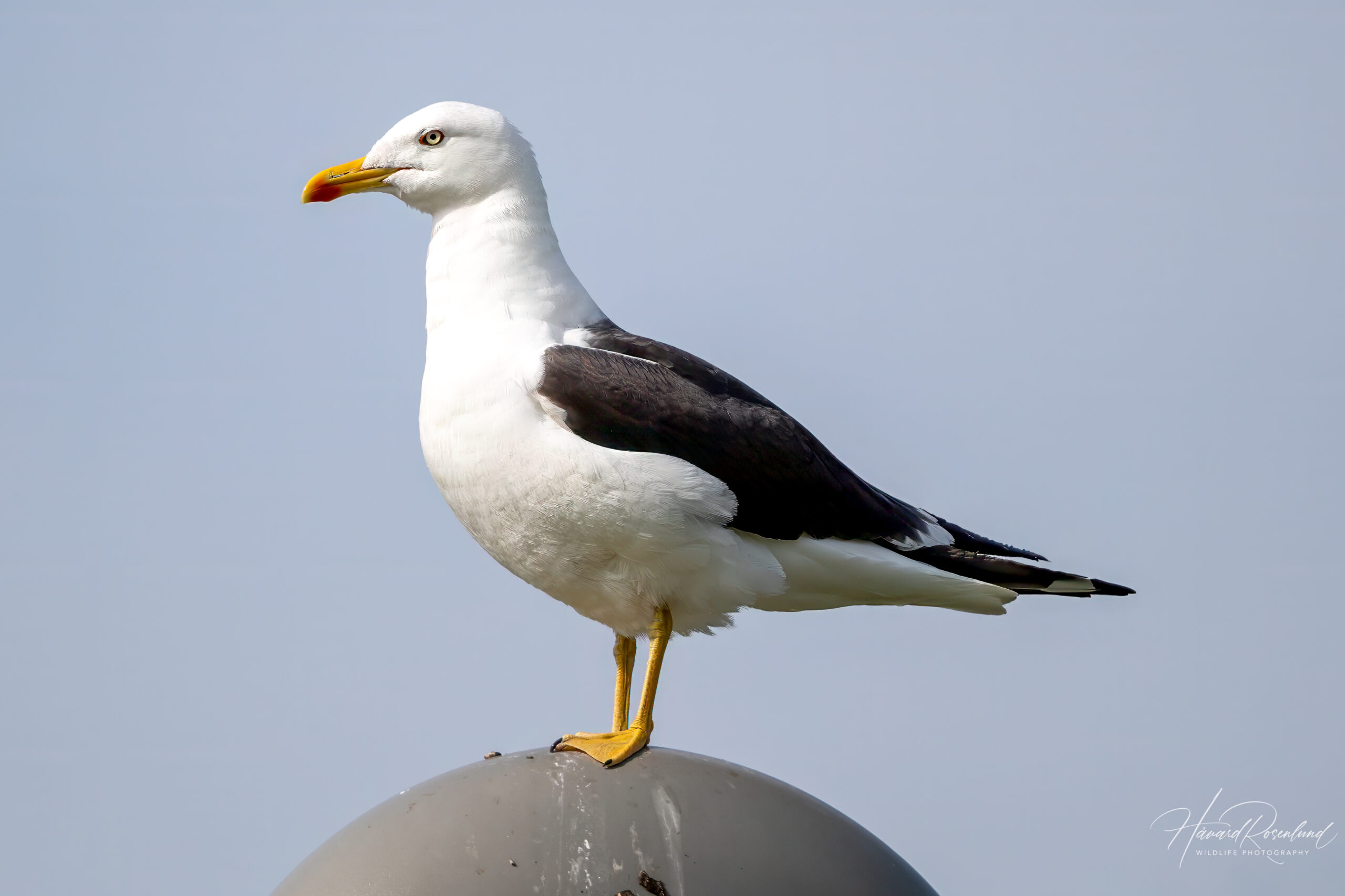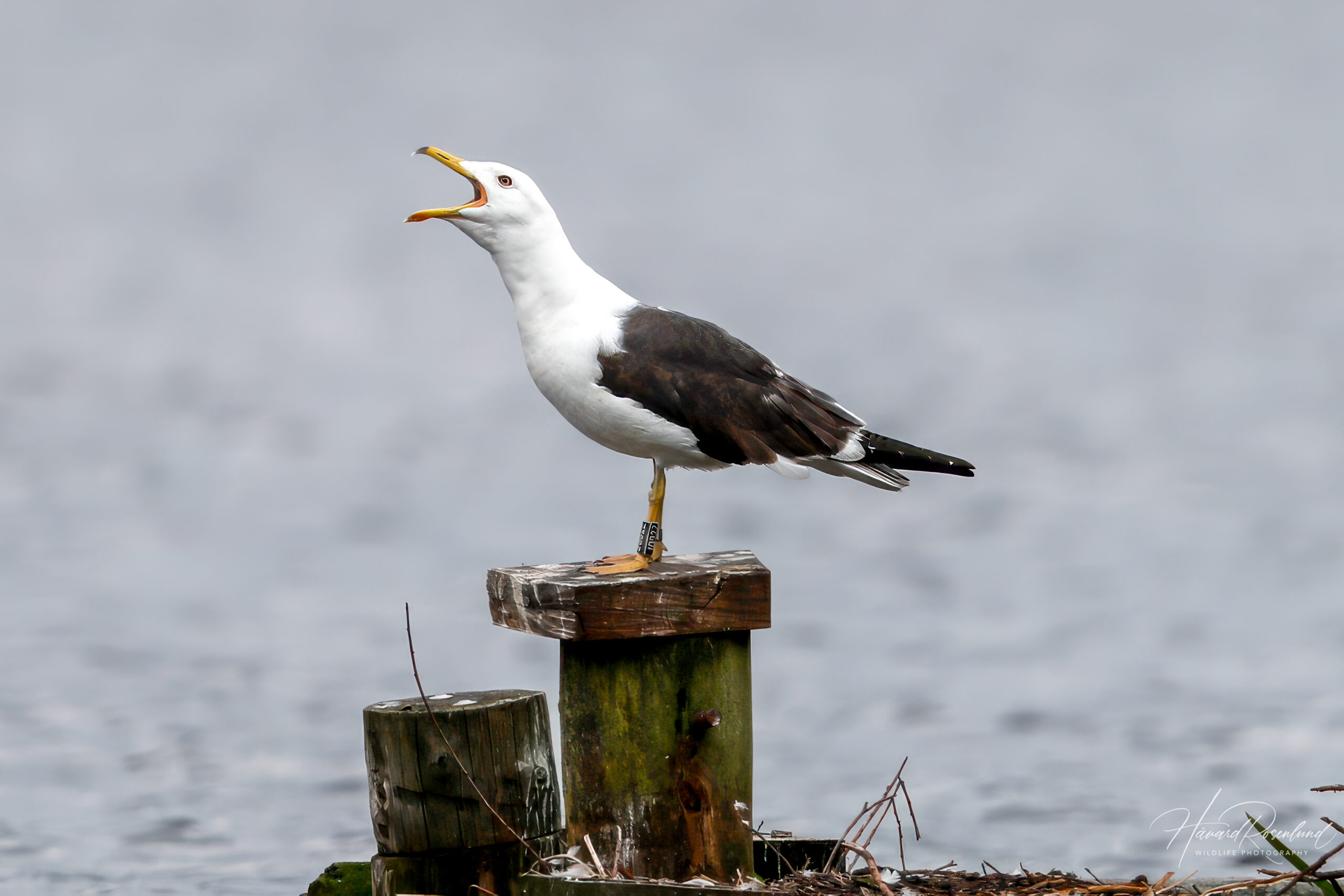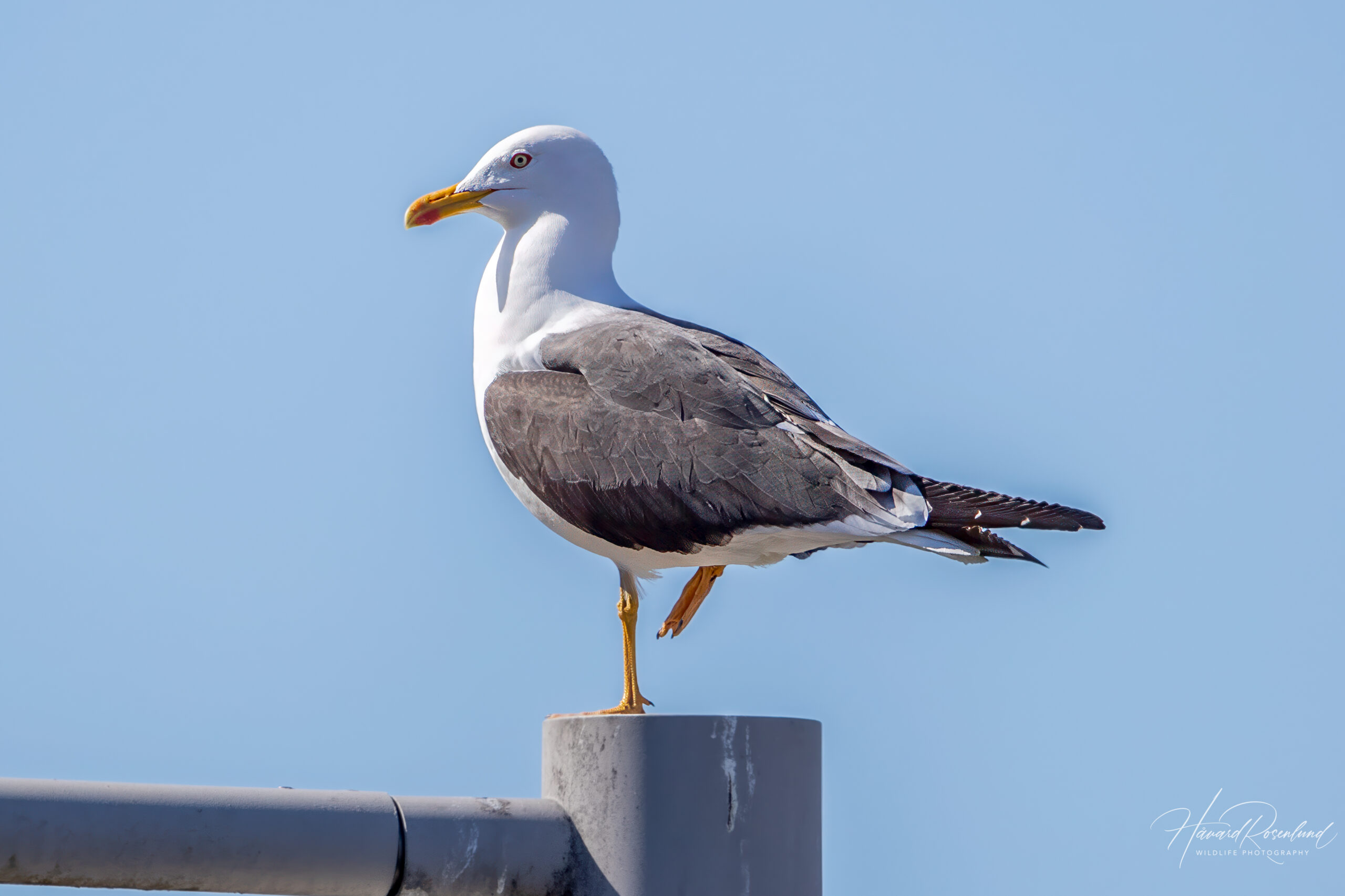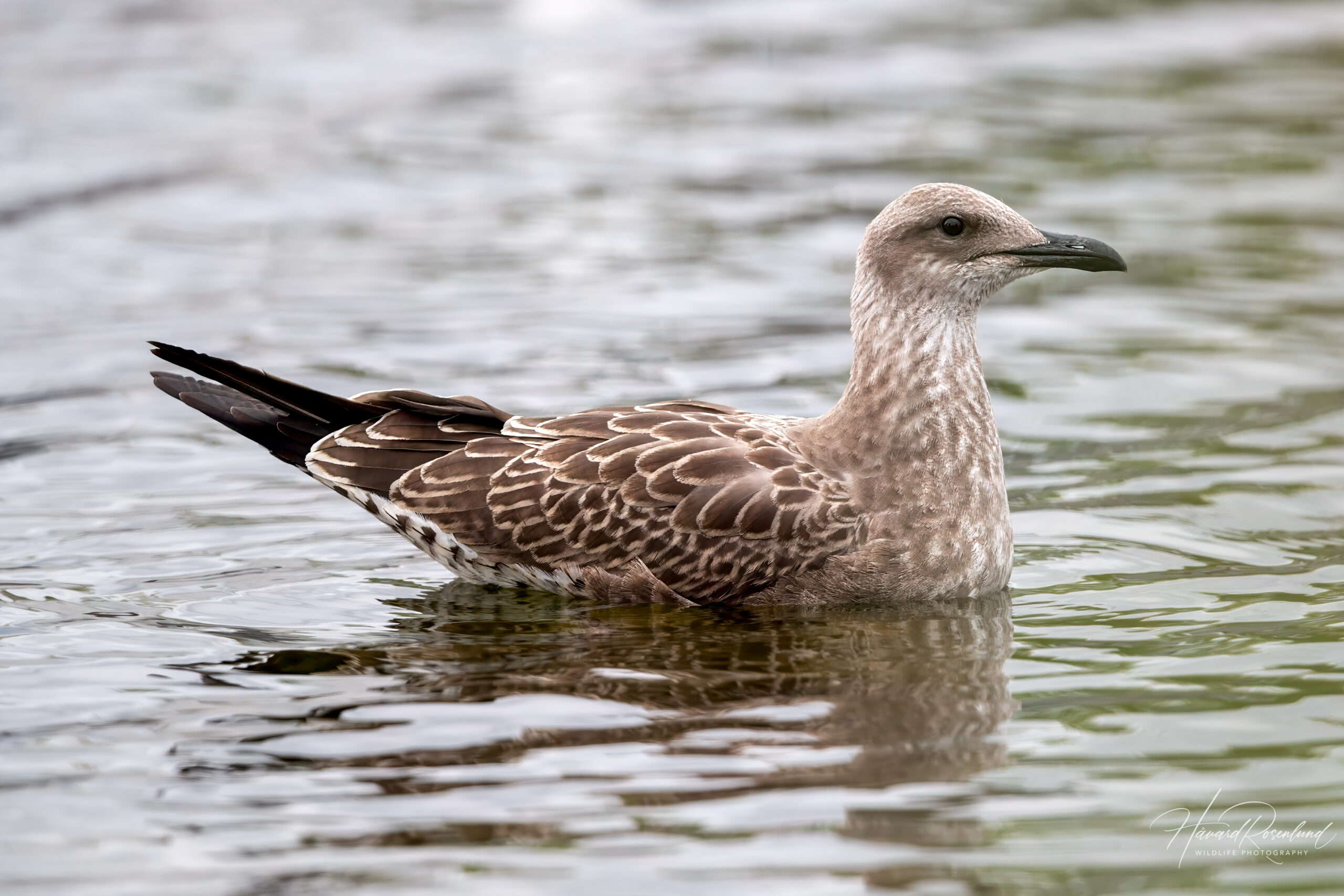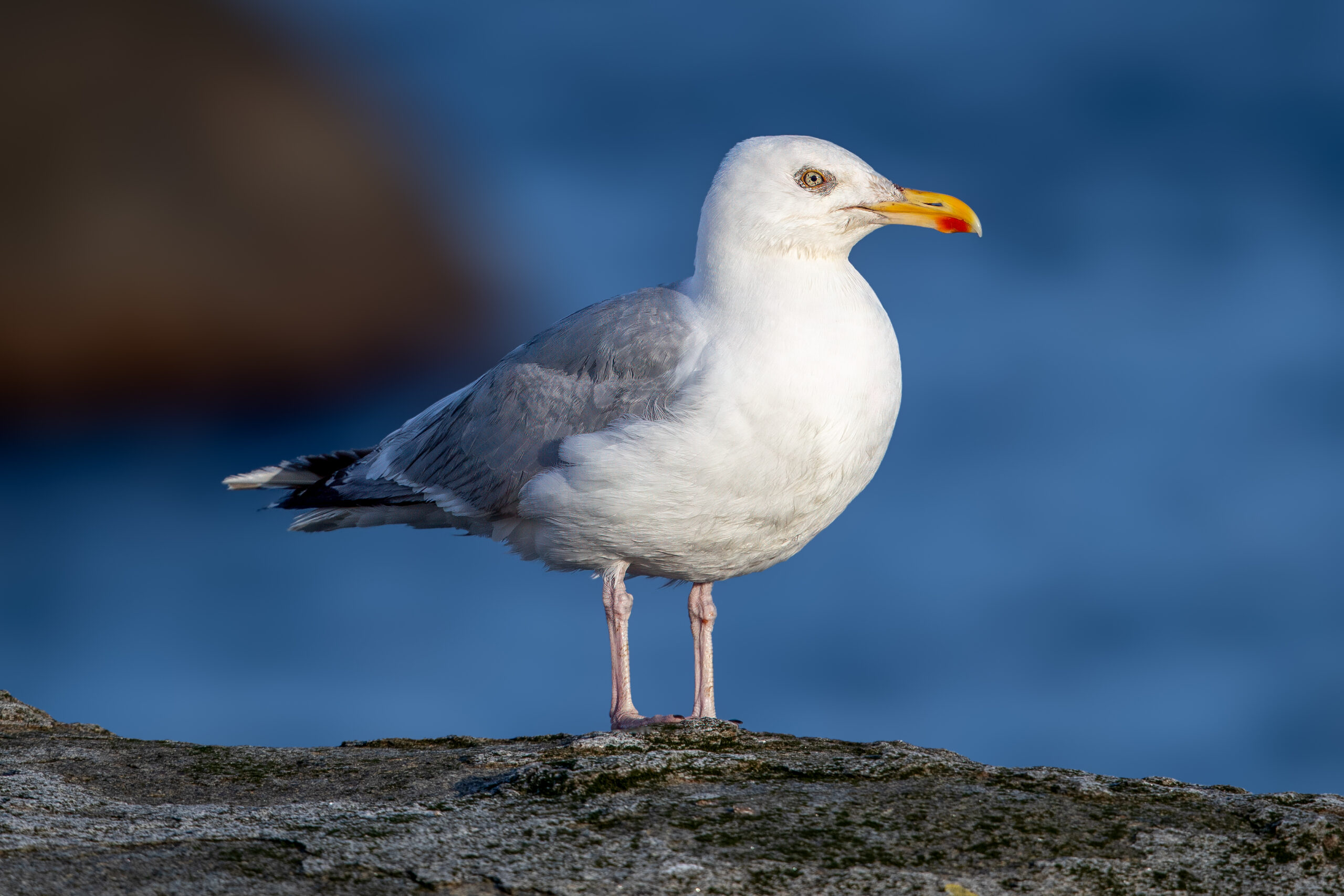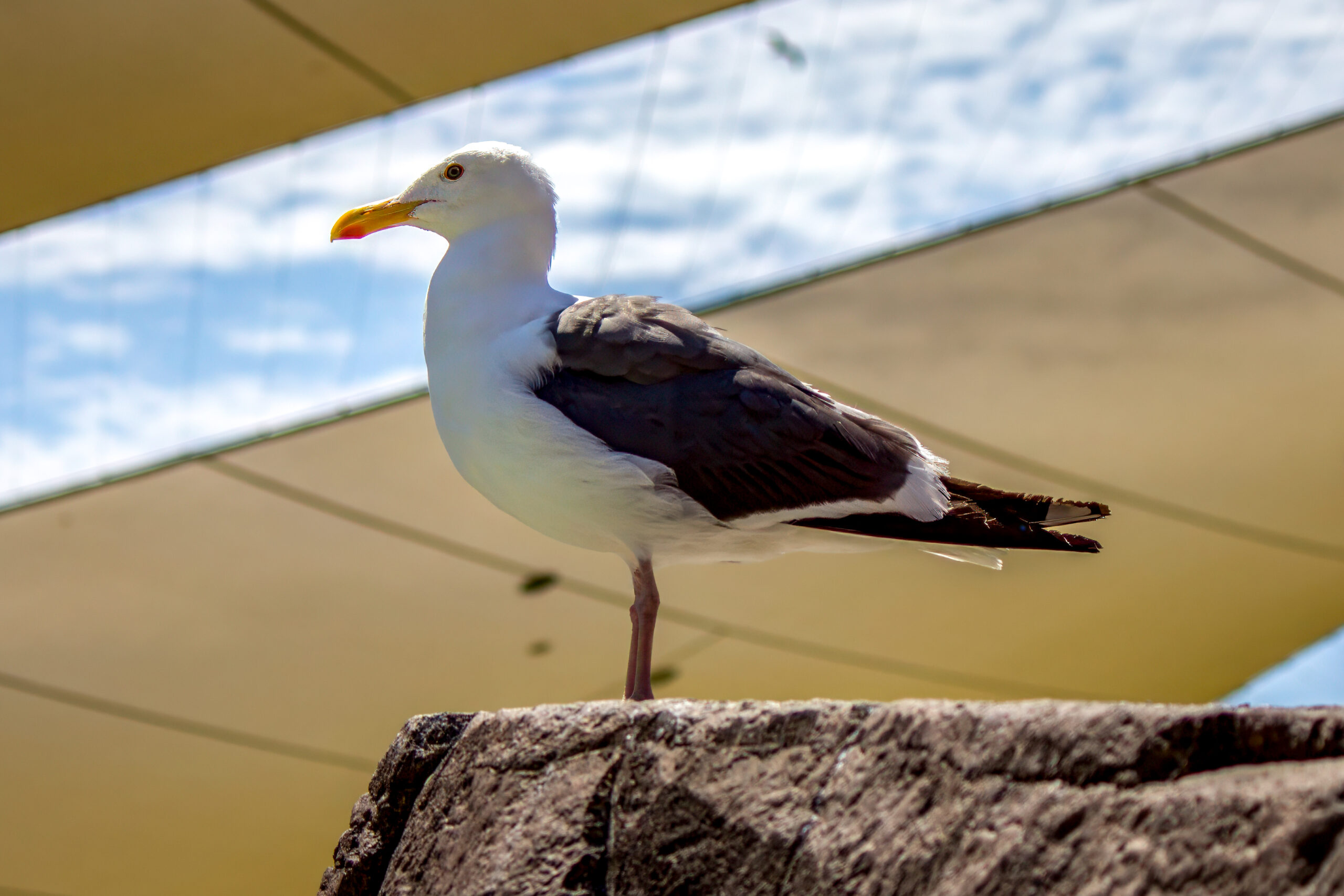Description
The lesser black-backed gull (Larus fuscus) is a medium-sized gull with a range that spans across Europe, Asia, and North Africa, with many migrating to western and southern Africa during the winter. Some also migrate across the Atlantic Ocean to North America. This gull is notable for its dark grey to black back and wings, contrasting with its white head, underparts, and tail. Adults have yellow legs and a yellow bill with a red spot. It has a body length of 51-61 cm (20-24 in), with a wingspan of 124-158 cm (49-62 in). This species can be distinguished from the similar but larger great black-backed gull (Larus marinus) by its slimmer profile, smaller size, yellow legs, more slender bill, and smaller white markings (called “mirrors”) on the wingtips.
Diet & habitat
Lesser black-backed gulls are versatile in their feeding habits, consuming a wide range of food items including fish, insects, worms, small birds, eggs, and garbage from humans. They are opportunistic feeders and are known to follow fishing boats for discards. These gulls breed in colonies on coasts and islands, but also increasingly on rooftops in urban areas. Outside the breeding season, they can be found in a variety of coastal and inland water habitats, including lakes, rivers, and marshes.
Migration
Most lesser black-backed gulls are migratory, with a few populations in Western Europe and Great Britain being residents year-round. The most northern populations tend to migrate more extensively towards more tropical wintering grounds in Africa and Asia, whereas populations a bit further south tend to migrate shorter distances, such as from southern Scandinavia to southwestern Europe and North Africa. They migrate in late summer to October, with birds returning to their breeding grounds in early spring.
Nesting
The breeding season usually begins in late March or April depending on location. They breed in large colonies, particularly in parts of Europe, and often alongside European herring gulls (Larus argentatus). Nests are made on the ground, often on islands or along coastlines, where they are less vulnerable to predators. Lesser black-backed gulls lay 2-3 eggs, which are incubated for about 24-28 days. The chicks fledge at 30-40 days but remain dependent on their parents for several weeks thereafter. They first breed at four years of age and can live to be 26 years old.
Status
The lesser black-backed gull has a large, although fluctuating, population size and extensive range and is listed as least concern on the IUCN Red List. In some areas the species has seen a decline, such as on the British Isles, and local populations can be threatened by predation, disturbances at nesting sites, and pollution. In many other areas the species seems to be increasing in numbers, and it is probably benefited by its ability to successfully breed in urban environments.




